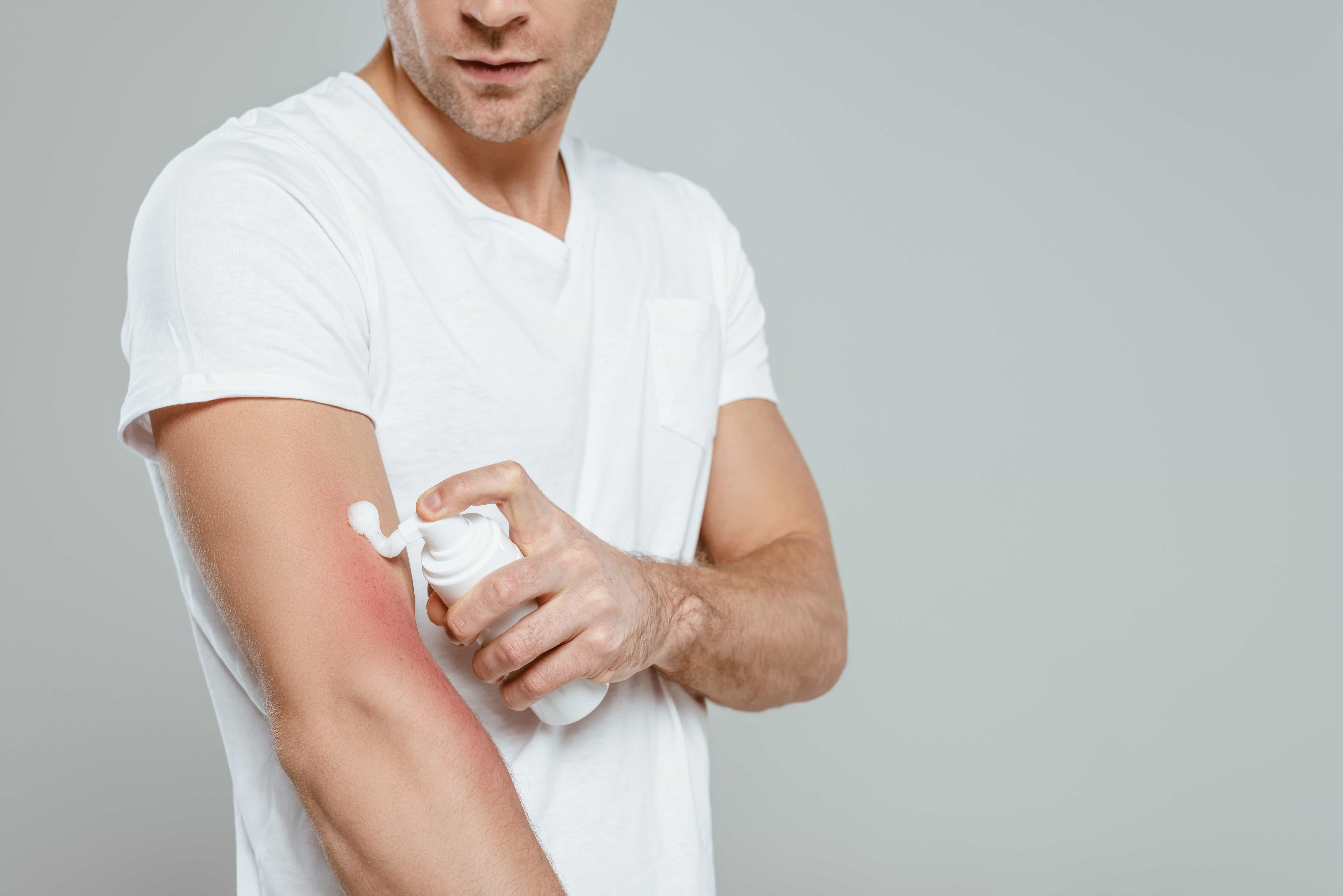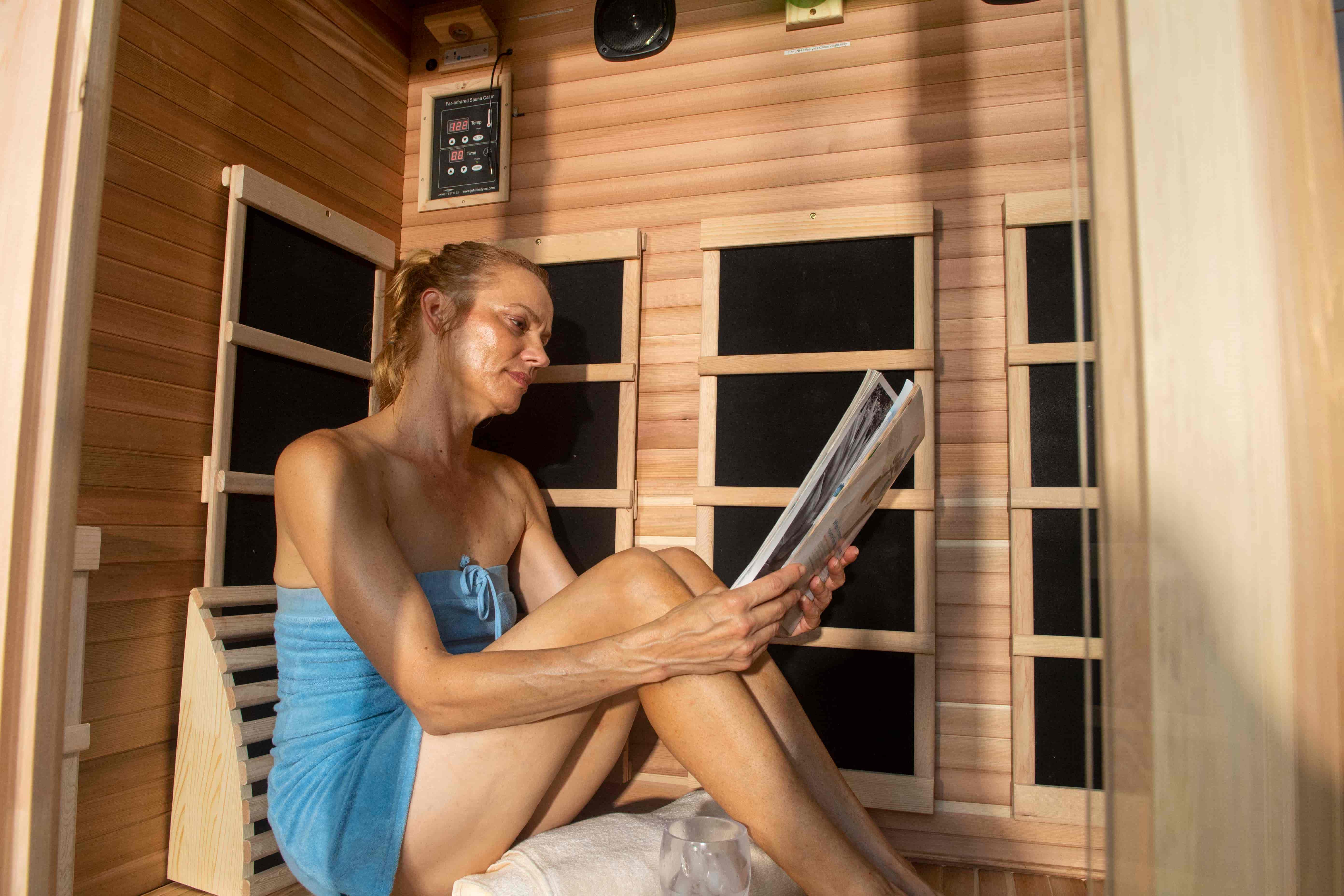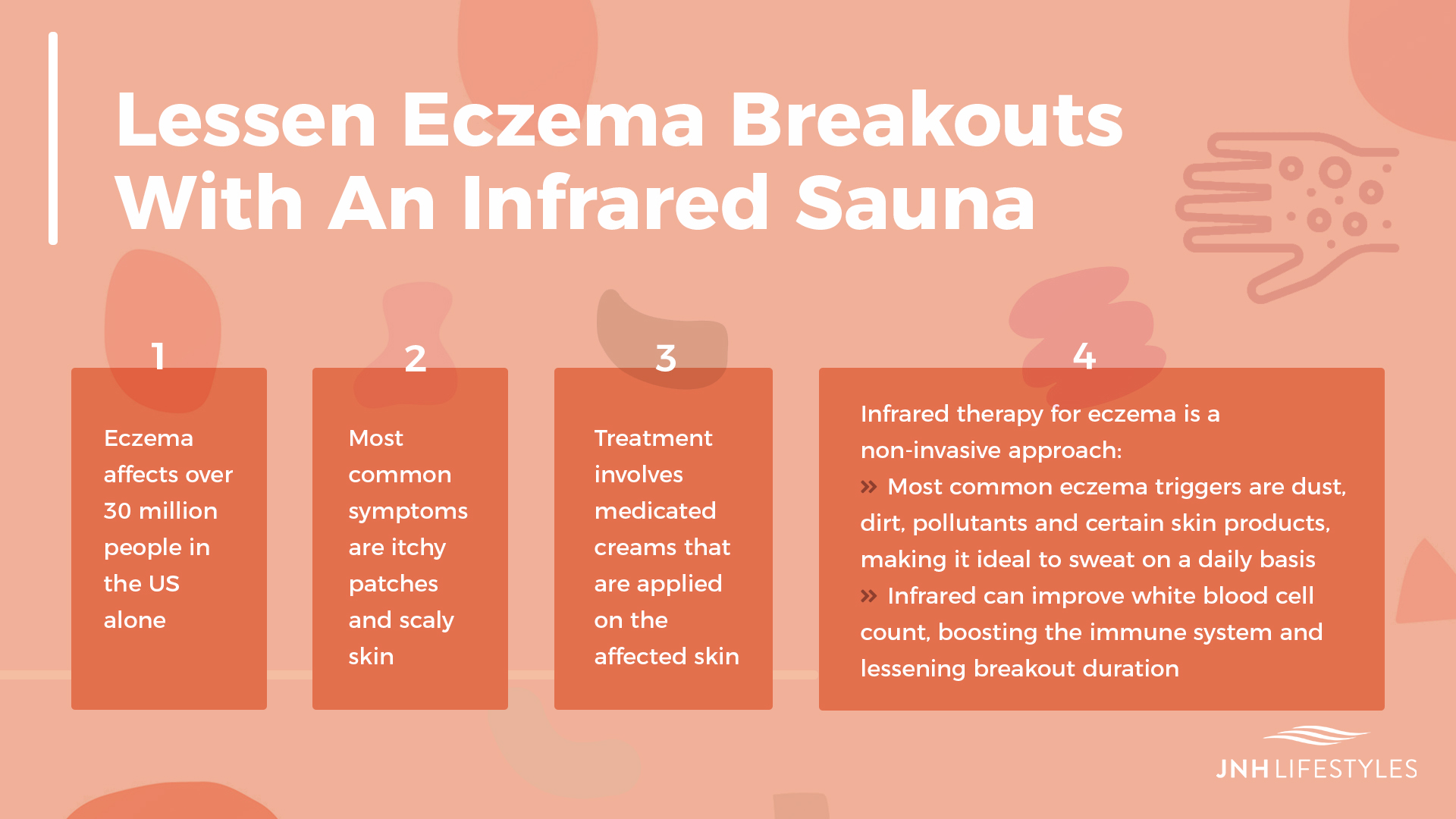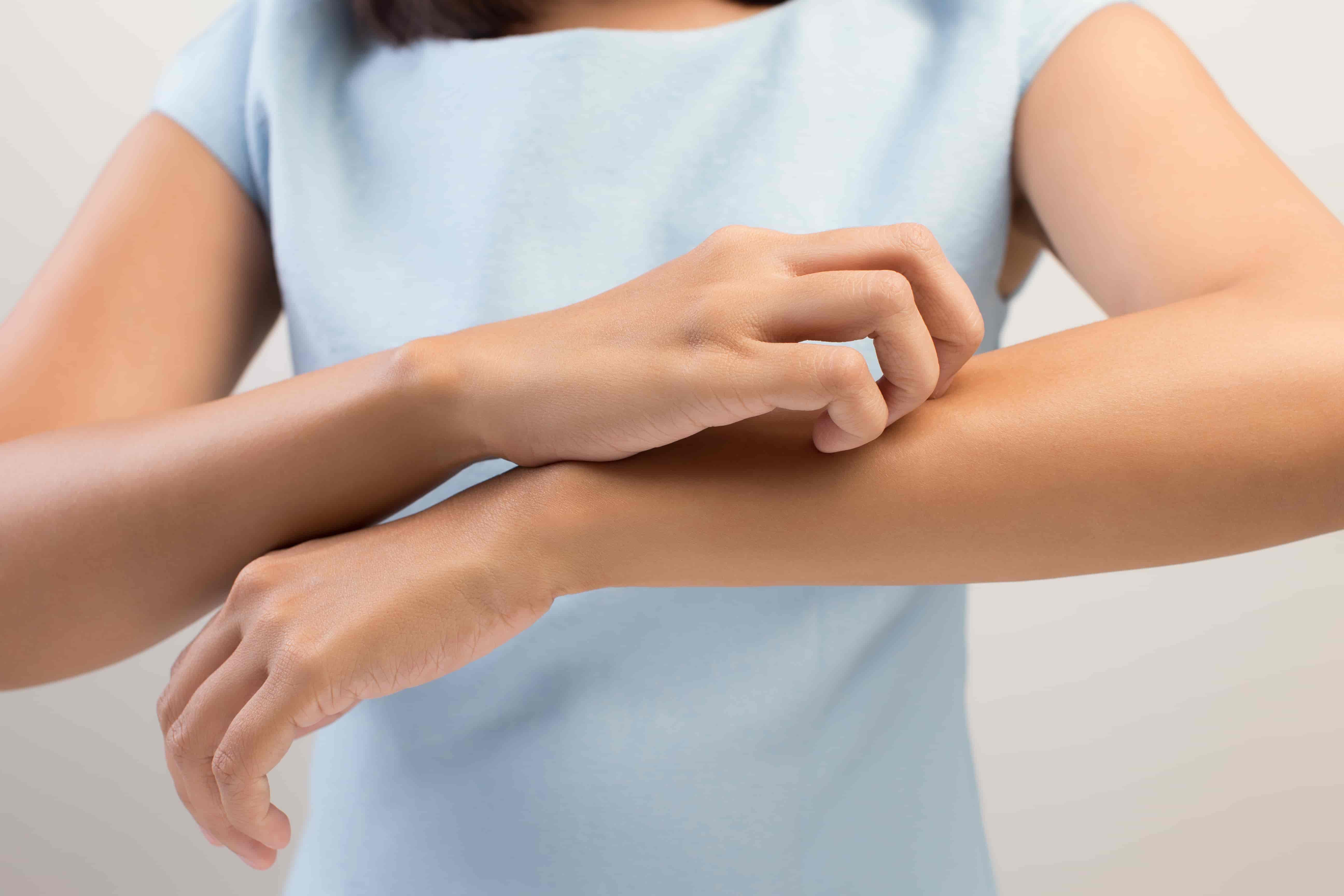Frequent Eczema Breakouts? Learn How Infrared Therapy Can Help
Eczema affects over 30 million people in the US alone, regardless of ethnicity, gender, or skin color. There are several types of eczema, each differing in causes and the treatment they may require. Eczema symptoms depend on a person's age, but the most common ones are itchy patches and scaly skin.
Luckily, eczema is not a contagious condition and if you get the symptoms under control, one can live a normal and fulfilled life. Besides eczema creams and other medication, there are other ways to manage this pesky skin disorder. Changing your diet, controlling stress, exercising, and adopting other healthy habits may be helpful. There are also certain types of light therapy, like infrared wavelengths, that have been used in the treatment eczema symptoms [1].
Life With Eczema
Eczema may not be a life-threatening disease, but it can be extremely uncomfortable and affect a person's self-esteem, especially during puberty and teen years. Based on the National Eczema website, around 9.6 million children under 18 suffer from atopic dermatitis, the most common type of eczema. At that young of an age, when a person is starting to develop on a psychological level, eczema symptoms can affect the way they perceive themselves and their social interactions.
Itching alone can cause additional stress, making it borderline unbearable to a sufferer, which is closely followed by dryness of the skin and pronounced redness. Unfortunately, pain is another of eczema's symptoms that can disrupt sleep, daily activities and altogether normal functioning [2].
Because of these symptoms, eczema can greatly affect the quality of life by disrupting sleep, leading to agitation and social isolation. The latter is especially present since people who suffer from eczema feel embarrassed by their appearance and tend to avoid social interactions [3]. While eczema itself is not life-threatening, the reasons you have it may cause other conditions that are extremely serious, like asthma. Also, at sometimes eczema is only a symptom, with other underlying issues leading to autoimmune disease, obesity, high blood pressure, heart disease, or diabetes.
What Triggers Eczema Symptoms
Eczema is not one disease, it is a name for several skin conditions, with seven being the most common ones: atopic dermatitis, contact dermatitis, neurodermatitis, dyshidrotic eczema, seborrheic dermatitis, nummular eczema, and stasis dermatitis. They can be caused by different triggers and may affect various areas of the body.
The one that is present in the majority of people is atopic dermatitis. This eczema rash is caused when the immune system reacts to something present inside or outside of the body. It is a long-lasting condition that may improve or worsen over time and is often followed by hay fever and asthma. Contact dermatitis appears when skin touches an irritant or allergen that in turn causes inflammation, hives, and even severe allergic reactions, like swelling and shortness of breath.
Genetics can also be a trigger, like in the case of seborrheic dermatitis, better known as seborrhea. With this form of eczema, flaky patches appear on the skin through a combination of hormones, microorganisms, and genes. Besides allergens, genetics, and irritants, poor circulation in the legs can lead to swelling of the veins, causing skin redness, itching, and aches — a condition known as stasis dermatitis. It mostly appears in the elderly population, with people also calling it venous eczema or gravitational dermatitis.
Available Eczema Treatment

When it comes to treatment, eczema creams can be the most commonly used to apply on the affected skin. This can often be enough to treat eczema rash symptoms, but not to eliminate the cause. There is a variety of creams and ointments that your doctor can prescribe. Typically, these therapy creams include corticosteroids, but they can also have other ingredients intended to affect your immune system and control skin reaction.
Sometimes, medicines against infections can also be included in the treatment, such as an antibiotic cream if you have open cracks or sores. If the infection is severe, you may also have to take oral antibiotics for a while, along with treating the skin with a cream. Patients with more severe cases of eczema rash may need to take oral corticosteroids, but they can have serious side effects if taken for a long time. Newer treatments, like injectable biologics, have been recently approved by the FDA for people with eczema that does not respond to any other therapy for this skin condition.
Besides traditional medication, some alternative treatments may also help, e.g. relaxation, counseling, and light therapy. The latter has commonly involved ultraviolet radiation, but it comes with some drawbacks, such as the increased risk of skin cancer and premature aging. Ultraviolet radiation though, is not the only form of light therapy available; infrared therapy can mitigate eczema symptoms, making one feel more comfortable.
Eczema And Infrared Light Therapy
Infrared for eczema is a non-invasive approach and is not intended to be a replacement for any medication therapy prescribed by a doctor. Spending time within infrared saunas can be a great way to manage your eczema by soothing itchy and dry skin. Since the most common eczema triggers are allergens and irritants, like dust, dirt, pollutants, and certain skin products, it can be ideal to sweat on a daily basis. One of the many infrared therapy benefits is the full body heat it provides, warming you from the inside out, initiating a deep sweat [4].

Another important way to deal with eczema is by relaxing and decreasing stress. It may not be the main cause of a flare-up, but it can make it worse. Infrared saunas, like the Freedom Collection by JNH Lifestyles, have all the properties to make you feel comfortable and calm. They are made of high-quality red cedar wood to connect you with nature and premium speakers that allow you to listen to soothing sounds during an infrared session.
Improving circulation, especially in the case of stasis dermatitis can help to soothe the affected area and slow down symptoms [5]. Since the immune system can play a pivotal role in keeping your eczema under control, infrared sauna benefits, like improving your white blood cell count, can prove useful by boosting the immune system [6]. In a way, eczema and infrared light therapy can go hand-in-hand since the heat will open up the pores and allow you to moisturize the skin better. This can reduce dryness and decrease the most frustrating symptom — the itching. With a decrease in annoying symptoms, one can sleep better, leading to an increase in overall mood.
In Conclusion
Infrared saunas may not be a cure-all treatment, but if used with prescribed medications and an improved lifestyle, they can definitely help with the time of recovery. Check out the selection of JNH Lifestyles’ personal saunas and find the perfect one for your home.

Resources:
[1]Hyun Kyu Kim, et al. (2012). "Clinical study of stonetouch far-infrared device on atopic dermatitis.” koreauniv.pure.elsevier.com, Korea University, Department of Dermatology, October 2012, https://koreauniv.pure.elsevier.com/en/publications/clinical-study-of-stonetouch-far-infrared-device-on-atopic-dermat.
[2]Silverberg JI, et al. (2019). "Pain Is a Common and Burdensome Symptom of Atopic Dermatitis in United States Adults.” ncbi.nlm.nih.gov, National Center for Biotechnology Information, November 2019, https://www.ncbi.nlm.nih.gov/pubmed/31228619.
[3]Anderson RT and Rajagopalan R. (2001). ” Effects of allergic dermatosis on health-related quality of life.” ncbi.nlm.nih.gov, National Center for Biotechnology Information, July 2001, https://www.ncbi.nlm.nih.gov/pubmed/11892052.
[4] Genuis, Stephen J, et al. (2010). “Blood, Urine, and Sweat (BUS) Study: Monitoring and Elimination of Bioaccumulated Toxic Elements.” link.springer.com, Springer Nature, Archives of Environmental Contamination and Toxicology, November 2010, https://link.springer.com/article/10.1007%2Fs00244-010-9611-5.
[5] Beever Richard. (2009). “Far-infrared saunas for treatment of cardiovascular risk factors.” ncbi.nlm.nih.gov, National Center for Biotechnology Information, July 2009, https://www.ncbi.nlm.nih.gov/pmc/articles/PMC2718593/.
[6] Pilch,W, et al. (2013).“Effect of a Single Finnish Sauna Session on White Blood Cell Profile and Cortisol Levels in Athletes and Non-Athletes.” ncbi.nlm.nih.gov, National Center for Biotechnology Information, December 2013, https://www.ncbi.nlm.nih.gov/pmc/articles/PMC3916915/.

